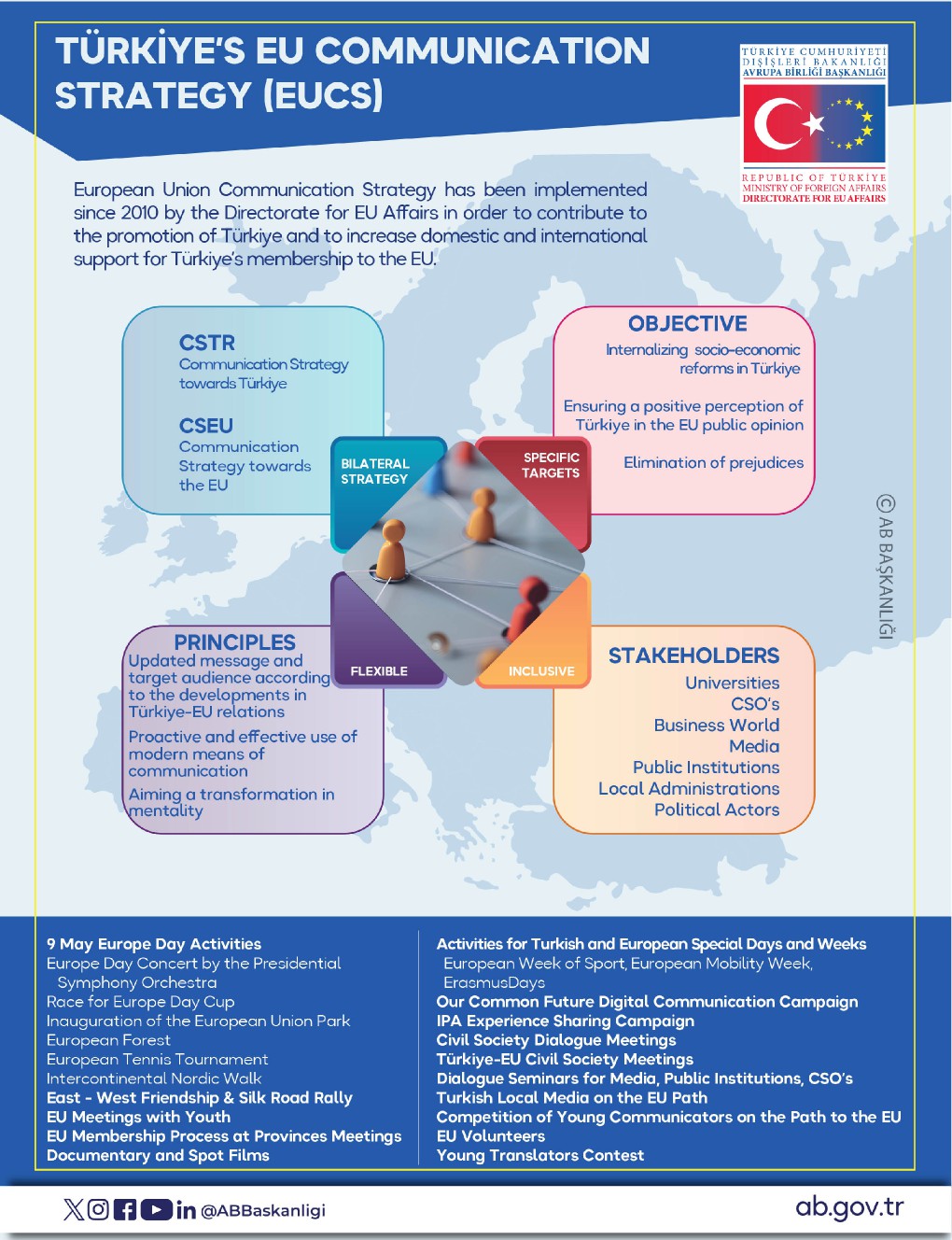- HOMEWelcome
- DIRECTORATE FOR EU AFFAIRSStructure
- E.U.Structure
- TÜRKİYE-EU RELATIONS
- History of Türkiye- EU Relations
- Main Documents
- Agreements
- Protocols
- Accession Partnership Documents
- National Programmes for the Adoption of the Acquis (NPAA)
- Türkiye Reports Prepared by the European Commission
- Enlargement Strategy Papers
- Türkiye’s National Action Plan for the EU Accession
- Türkiye’s National Action Plan for the EU Accession (2021-2023)
- Association Council Decisions
- Documents on Türkiye-EU Summits
- Institutional Structure
- Customs Union
- Türkiye- EU High Level Dialogue Meetings
- DATASources
- MEDIANews
- CONTACTContact Us
- Türkiye's European Union Communication Strategy (EUCS)
- EU Communication Strategy Activities
- Türkiye – EU Relations in Infographics
- May 9th Europe Day Activities
- EU Meetings with Youth
- EU Membership Process at Provinces
- “My European City” Documentary
- Türkiye-EU Civil Society Meetings
- Civil Society Dialogue Meetings
- Dialogue Seminars for the Public - NGO's and Media
- The Future of Europe and Youth Meetings


